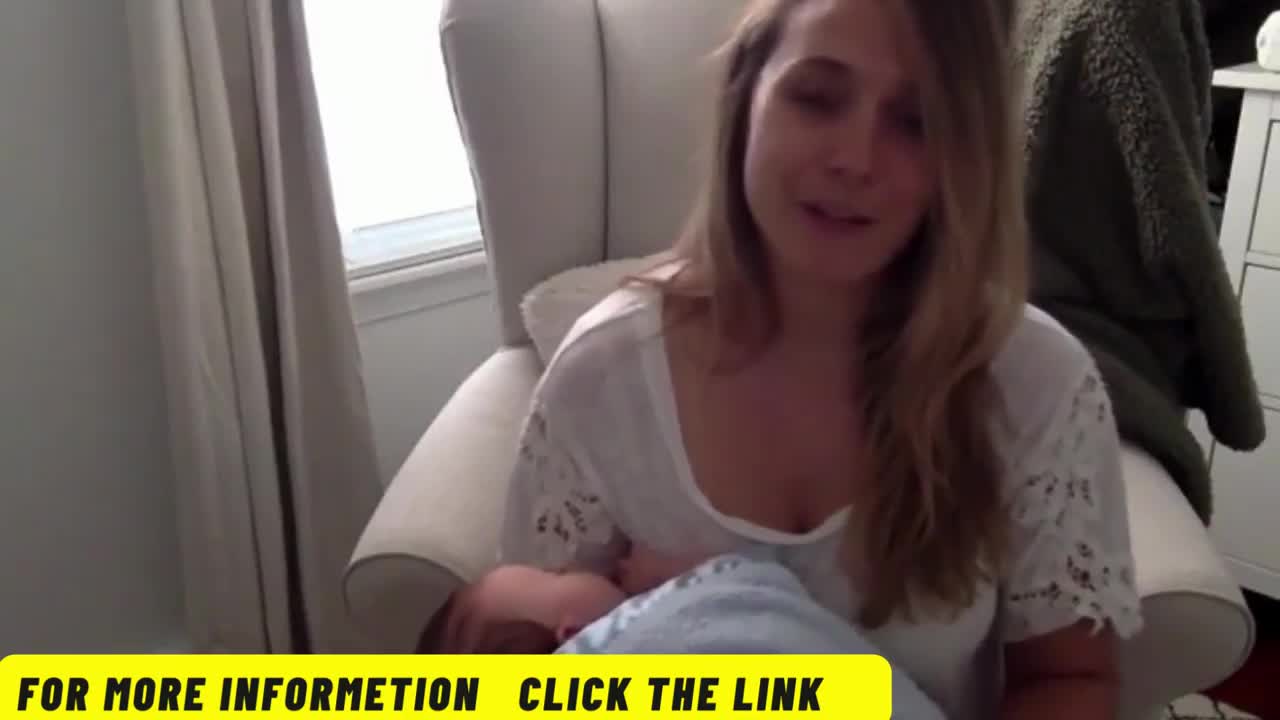Premium Only Content

Child Psychology's Weird Trick Gets Any Baby to Sleep ?
Click here - https://bit.ly/33zvzLx
Child Psychology's Weird Trick Gets Any Baby to Sleep ?
#babyandkids #sleep #miracle #babymiracle #trick #child
I want out! That’s the message your toddler will send – one way or another – when he’s ready to wave goodbye to the crib and say hello to a big-kid bed. Your child might actually verbalize displeasure, or more likely, simply climb out of the crib.
So, what needs to be done?
First, resist the temptation to move him too early. Most experts recommend doings so around age 3. Unless your child is climbing out of his crib or needs more space than a crib can provide – his body is growing at an astounding rate – it’s better to keep him in the crib, which allows him to feel safe.
This way, your child can feel comfortable taking giant developmental leaps during the day but still regress to the security of his old crib at night.
Moreover, until age 3, toddlers are very impulsive, and your child’s difficulty in understanding and being able to follow directions or rules (like staying in bed all night) will make sleeping in a bed a real challenge. If you transition to a bed before age 3, you can plan on waking up to a little visitor next to your bed pretty much every night.
When the time comes, however, you need to help your child transition smoothly to sleeping in a bed. For that, you need to follow certain steps. These are:
1. Create a safe environment: Safety proof your child’s room and any adjacent areas he may be able to visit into the middle of the night. Secure windows, tops of stairs, and any stepstools that can be tripped over. Even better, you can install a safety gate at your child’s door. You can even install a small night-light in his room to help him orient himself and avoid hurting himself.
2. Pick the mattress: Go to the mattress store – or any other store that sells mattresses – and let your child help you choose the mattress or bed. With safety in mind, all you need is a twin-size mattress and box spring and some safety rails for the side. You should adjust the height of this new bed accordingly, as it will need to sit low on the floor for some time until your child gets used to it. Get some fun new sheets, some special pillowcases and you’re set to go.
3. Disassemble the crib (together): Once the new bed comes home, ask your child to help you to take down the crib. This way, your child will feel part of the transition process and will also be able to say good-bye to the crib.
4. Set up the bed: Put the bed in a corner of your child’s room so that the head and side of the bed are flush against the wall for protection. Add a safety rail to the exposed side of the bed. Your child will feel safe this way, just as he did in his crib.
5. Explain the rules of bedtime: If your child is verbal before the first night of sleeping in the bed, go over the rules of bedtime with him. Tell him that he is a big boy now who needs to understand that when we go to sleep, we only wake up when the sun is nice and bright.
6. Do your bedtime routine: During the first few nights your child is sleeping in his new bed, take an extra 10 minutes of reading time together to make him feel comfortable in his new environment. The idea here is to make your child feel safe. If your child seems excited about the new bed from the very start, you’re one of those luck people who has made this transition easily
Co-sleeping is the practice where the child sleeps in bed with his parents. Not surprisingly, it is one of the most hotly debated and controversial topics related to pediatric sleep. Let’s see why.
Some people argue that co-sleeping is the right and natural way to raise a child because the practice fosters a stronger bond and a more secure attachment.
Conversely, others will tell you that co-sleeping is risky, ridiculous, or even dangerous and they don’t want it for their family.
So, which approach holds the truth?
First, it’s important to understand that co-sleeping is not magic. Although some proponents of the family bed would disagree, numerous couples have reported that their babies did not necessarily sleep deeper or longer because their parents were close by. In fact, some parents found that their child slept longer and woke less frequently when they stopped co-sleeping and moved him into his own crib.
However, whether families choose to co-sleep or have their children sleep independently is a personal decision, and if both parents and child are safe, rested, and fulfilled, then co-sleeping is nothing to worry about.
-
 12:59
12:59
Film Threat
14 hours agoGLADIATOR II EARLY REVIEW | Film Threat Reviews
16.6K3 -
 11:22
11:22
IsaacButterfield
1 day ago $2.88 earnedThe Shocking Truth About Fat Kids! (Ozempic For 6 year olds)
11K13 -
 1:02:48
1:02:48
PMG
1 day ago $4.74 earned"Missiles FIRED! Russia Hit By Ukraine!!! IS THIS WWIII?!"
8.36K1 -
 10:34
10:34
justintech
20 hours ago $16.85 earnedBest Gaming PC Under $1000! - In 2024
56.8K8 -
 9:34
9:34
Dr David Jockers
17 hours ago $14.20 earnedThe Shocking Truth About Butter
103K7 -
 9:05
9:05
Bearing
1 day agoJaguar's Woke New Ad is SHOCKINGLY Bad 😬
43.4K106 -
 7:55
7:55
Chris From The 740
17 hours ago $10.35 earnedWill The AK Project Function - Let's Head To The Range And Find Out
30K9 -
 2:39
2:39
BIG NEM
13 hours agoHygiene HORROR: The "Yurt Incident"
20.7K2 -
 3:19:21
3:19:21
Price of Reason
16 hours agoHollywood Celebrities FLEE the US After Trump Win! Wicked Movie Review! Gaming Journos MAD at Elon!
112K80 -
 3:55:45
3:55:45
Alex Zedra
12 hours agoLIVE! Last Map on The Escape: SCARY GAME.
93.1K3